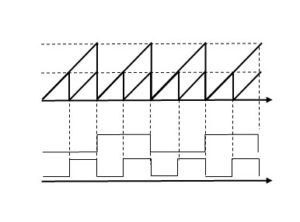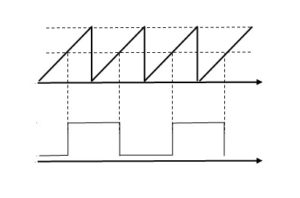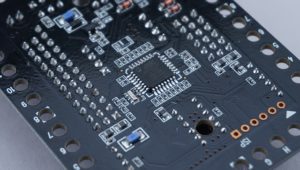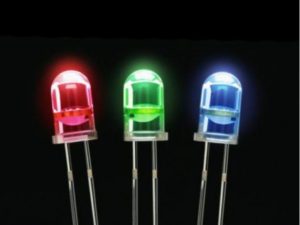External input interrupt application [EXTI for STM32]
This is an example of an interrupt application with an external input signal. The following is an explanation of the unique part of external interrupts. Setting Spec.:Input :PC13 Floating input Output:PA5 Push-pull output+500Ω+LED The point When using external interrupts, the clock must be supplied to AFIO in addition to GPIO.
SysTick interrupt application [SysTick for STM32]
This is an application for interrupts using the SysTick timer provided in the ARM core without using peripherals. Setting Specification:Output:PA5 Push-pull output+500Ω+LED Colum SysTick interrupts can only be used in environments that do not use FreeRTOS, since FreeRTOS itself already uses SysTick for OS timers. The development environment on this site is configured to use […]
Let's sound a piezoelectric buzzer and speaker [STM32 Nucleo]
Let's connect a piezoelectric buzzer and speaker to an STM32 MCU (Nucleo board) and play them. This time, I used an inexpensive piezoelectric buzzer (model: LF-MB12B06). This is an application of a peripheral timer. For details, see Timer/Counter [Details of STM32's High Functional and General Purpose Timer]. Table of contents1 Piezoelectric buzzer specifications2 Circuit of […]
PWM dimming of LEDs with MCU [STM32 Nucleo]
How can we use the digital output of MCU to dim LEDs? I will explain the magic trick of using the digital output of MCU to control the brightness continuously in an analog manner, as if dimming were a magic trick. Colum For example, if an analog VR is added to the input and the […]
Variable pulse application [Pulse control with STM32].
This application controls arbitrary frequency pulses with STM32 MCU. In this example, the frequency changes when a pushbutton switch is held down, but it can be applied in many other ways. Setting SpecificationPins used: PB8 Alternate output (Timer output) PC13 Input (Pushbotton SW)Peripheral used: TIM4_CH3 Count CLK1kHz Colum This application uses a combination of switch […]
PWM pulse application [PWM output of STM32]
This is an application program that sets the timer of the STM32 MCU to PWM output. You can see the frequency and pulse duty ratio change depending on the setting value. Setting specification:Pin used: PB8 Alternate output (Timer output)Peripheral used:TIM4_CH3 Counter CLK 1kHz
Fixed pulse application [Pulse output of STM32]
This application program uses the timer of the STM32 MCU to generate a fixed frequency pulse only when an input switch is pressed. Setting Specification:Pin used:PB8 Alternate output(Timer output)Peripheral used:TIM4_CH3 Counter CLK 1kHz
GPIO ON-delay input application [GPIO practical example for STM32]
ON-delay input After the successful "LED-blingking", I will introduce the application of anti-chattering on-delay input and unused pin processing examples to practical examples of STM32GPIO input. Processing of unused pins
STM32 Nucleo MCU starting with LED blinking [Gateway to Embedded system]
Setting the STM32's peripheral GPIOs to blink the output LEDs is a simple operation in itself, but it means that the series of steps from the initial setup of MCU to the build and transfer to MCU have been successfully completed. LED-blinking circuit Setting specification:Input:PC13 Floating input Pushbutton SWOutput:PA5 Push-pull output+500Ω+LED Program Description ① Reads […]
Application program samples used in practice [useful for ARM electronic work]
Table of contents1 Applications and Practices1.1 GPIO Applications1.2 Timer/counter Applications1.3 SysTick interrupt Applications1.4 External interrupts Applications1.5 Serial communication USART Applications1.6 ADC Applications1.7 Serial communication I2C Applications1.8 Serial communication SPI Applications1.9 RTOS Applications1.10 Measurement Applications1.11 IoT Applications Applications and Practices GPIO Applications Timer/counter Applications SysTick interrupt Applications External interrupts Applications Serial communication USART Applications ADC Applications […]










